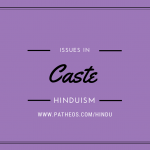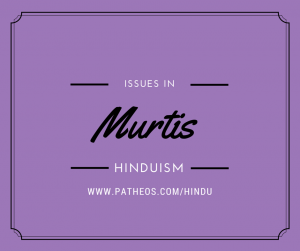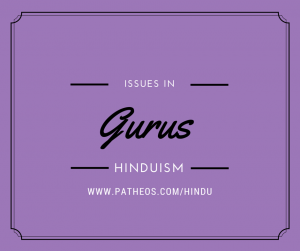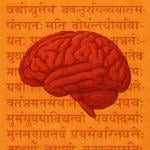No matter how you go about it, eating is never a harmless act. Something has to die in order for you to live. Life can be sustained only by feeding on life. As long as we have bodies, this will be our reality.
Despite this, many of us strive to do less harm. Occasionally you’ll meet someone who doesn’t care what harm they do. Their rationale is spoken in cliches of willful ignorance (like the people who joke that they eat meat because they love plants too much to kill them — despite the far greater amount of plants actually killed for a carnivorous lunch than a veg lunch). Jains not only don’t eat meat, but they also prefer fruits and nuts since the tree doesn’t die, rather than eating plants in which the entire thing dies. Still, people will say, “Yeah but they strain insects out of their water but still ingest bacteria. See! You can’t eat perfectly! So there!” This is often said while chowing down a second bacon cheeseburger.
It’s true. You can’t eat perfectly. You also can’t live in your home without it getting some wear and tear. That’s no reason to intentionally destroy it. It’s like if you were to see a smudge on the fresh paint and just give up in despair. “That’s it! Paint gets dirty! I might as well smear filth everywhere!”
The fact that one cannot achieve perfection is no reason to do as badly as possible. We live in a world where none of our decisions will ever be perfect, but we can achieve sublime beauty even in our imperfections.
That said, what about eating a sattvic diet?
Sattvic foods make you feel fresh and calmly energetic (like foods that might be on a “clean eating” list). Rajasic foods give an agitated energy (like coffee). Tamasic foods make you feel dull and lethargic (like alcohol or Thanksgiving gluttony). Over time, people developed lists of foods they categorized as sattvic, rajasic, or tamasic.
I’m not a fan of eating based on someone else’s list instead of tuning in to my own body. As someone with celiac, I can tell you right now that some foods labeled sattvic cause my body harm and distress (semolina pudding, for example, which is often served as prasad in temples). Just because it’s on a list of sattvic foods does not mean it’s going to make everyone feel serene and ready to meditate (which is a top reason people want to eat sattvic foods — so they can meditate without being agitated or drowsy).
One thing I’ve wondered over the years is what the food laws of various religions would look like if those religions had been developed in today’s world. There’s a Homer Simpson joke that, “Some people don’t eat pork; others don’t eat beef. But we all eat chicken!” Which isn’t true, of course, but would any founder of a religion have allowed chicken if they’d seen the conditions in a factory farm? We have a different world, where food is more complicated and no one thousands of years ago thought through the choices we have in front of us today.
In ancient times, sattvic foods were as easy as grabbing a mango from a tree. Which is nice if you happen to live in a tropical climate. As soon as humans starting moving far enough north or south of the equator to have harsh winters, the choice became: learn to preserve foods when they’re fresh or starve. So dried and canned foods were developed, which I’ve heard some gurus disparage — as though a fruit picked by migrant workers and shipped thousands of miles to Whole Foods is somehow more noble than a fruit hand-picked in the back yard and preserved.
Frozen food is another example: people will claim it’s “dead” somehow and has lost its nutrients. This despite the fact that the “fresh” produce at the grocery store has been sitting around all week losing its nutrients, while the frozen produce was preserved the day it was picked. We know we can freeze sperm, eggs, and even embryos and produce babies who are very much alive. We can freeze organs for transplant. If you were unfortunate enough to lose a finger, you could have it reattached if you’d thought to put it on ice, but if it were to sit out even as long as the freshest produce at the grocery store, it would be way, way too late. We’ve even found that if we cool a person’s body temperature while performing CPR, they can be revived a few hours after death, instead of the few short minutes available at room temperature.
There is no fruit in Ohio in February. I assure you that frozen strawberries or blueberries in my smoothie are fresher than whatever has been imported to the produce section of the grocery store. In the summer I like to subscribe to a CSA, but you only get 21 weeks of fresh local organic produce, and some of the early weeks would not sustain you (a handful of garlic scapes and four kohlrabi for the week, anyone?).
One food with a sattvic halo is milk. Dairy products are used widely throughout Hinduism. However, the dairy section of your local grocer is not stocked directly from Krishna’s own cowherd (or even your grandfather’s family farm). Most of the milk supports the veal industry, nevermind the fact that it’s full of hormones, steroids, and even pus. In our world, even something considered wholesome — like milk — cannot be guaranteed to always be sattvic. Can anything?
We have a lot of things to think about when it comes to food that our ancestors never dealt with. Factory farms. Pesticides. Polluted air and oceans. GMO. Monocrops and their depletion of the soil. Climate change. Our entire ecosystem is not sattvic, yet we still have to eat.
Corporations like Monsanto and Walmart are demonized — not without reason — but countless people rely on them for sustenance. It’s all well and good for the rich to talk about their raw local organic vegan diets, but the reality for many is a 50-cent box of Kraft Macaroni and Cheese or no dinner at all. Have you seen the cost of feeding a family of four? Even the most deficient diet is not cheap. Gwnyeth Paltrow can pat herself on the back for how well she eats, but what would she choose if she had $50 to spend at Save-a-Lot this week instead of the $2100 it would cost to feed your family a week of her recipes?
When we eat better, we feel better. When we do the best we can, we do better than when we don’t try at all. A sattvic diet is a nobler goal than unthinkingly grabbing whatever you saw advertised while you were watching television (the price of bacon is back down, so behold the onslaught of bacon ads!).
I wouldn’t tell someone not to try to eat a sattvic diet. But if you don’t always succeed? Join the club. Unless you live at an ashram with an organic garden and cow sanctuary (some people do!), your actual diet falls short of your ideal diet. Reality always falls short of idealism. Welcome to life on planet earth in the 21st century.















